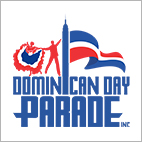Map
Event Description
The Dominican population’s sense of collective selfhood as a settled community with an imaginable future has manifested itself in the type of legacies it has seen fit to recognize. Witness the dedication ceremony that took place in the early afternoon of Saturday, August 6, 2011, on the corner of Audubon Avenue and 190th Street in Manhattan’s Washington Heights. Under a severe summer sun, without great fanfare, Manhattan Borough President Scott Stringer, a Jewish New Yorker, and city council member Robert Jackson, a longtime African American resident of Washington Heights, had come to join their Dominican American colleagues in the public naming of Miguel Amaro Way, thus honoring a community activist who was instrumental in the creation of the annual Dominican Day Parade. The Dominican American lawmakers hosting their colleagues in public office were State Senator Adriano Espaillat, Assemblyman Guillermo Linares, and city council member Ydanis Rodriguez, together with old-time district leaders Maria Luna and Maria Morillo.
The elected officials, community activists, neighbors, friends, and members of the Amaro family came to memorialize the legacy of a man who had imagined a future for Dominicans in the city. Judith Amaro, head of the Miguel Amaro Foundation, with the support of her brother Mao, worked closely with the office of council member Ydanis Rodriguez, with the support of the other Dominican American legislators, to secure a place for her father in the community’s public memory via the street-naming. People congregated on the sidewalk immediately outside the building where Miguel Amaro lived with his family in 1982. In that year he convened a group of his peers in his fifth-floor apartment to discuss the idea of creating an organization that would put together an annual Dominican parade to match the existing ethnic parades in the city at the time. He thought that such a parade would provide New York Dominicans, immigrant as well as U.S.-born, with an empowering resource by enhancing their visibility as a social force in the city while also stimulating a sense of their own collective identity. Having come to New York from Santiago, Dominican Republic, in the 1960s, Amaro harbored a deep faith in community advancement and ethnic advocacy, trusting that symbolic politics could have material consequences. A graduate of Lehman College, Amaro dedicated his life almost entirely to community activism. When he died in 1987, the Dominican Day Parade had become a force to contend with, a symbol to New York’s political establishment about the resolve of Dominicans to enter the conversation about the distribution of power among the various ethnic segments of the city’s population.
Organizers

Visited 1176 times, 1 Visit today


